Can a Railway Excavator Ballast Plow Be Used on All Types of Railway Tracks?
Railway excavator ballast plows have become essential equipment in railway maintenance operations, offering efficiency and precision in ballast redistribution tasks. However, when it comes to their versatility across different railway tracks, the answer requires careful consideration. While excavator ballast plows are remarkably adaptable machines designed to maintain track ballast across various railway systems, they cannot be universally applied to all track types without modification or consideration of certain limitations. Most standard ballast plows work effectively on conventional ballasted tracks with standard gauge measurements, particularly those used in commercial freight and passenger services. However, specialized tracks such as embedded rail systems, slab tracks, narrow gauge railways, and certain high-speed rail configurations may require specially adapted plows or alternative maintenance methods. Its effectiveness ultimately depends on factors including track structure, environmental conditions, and operational requirements of the specific railway system. Understanding these limitations is crucial for railway maintenance planners and operators to ensure proper equipment selection and optimal maintenance outcomes.
Track Structure Limitations

Gauge Considerations
The track gauge—the distance between the inner edges of the rails—significantly impacts the compatibility of railway excavator ballast plows with different railway systems. Standard gauge railways (1,435 mm or 4 ft 8.5 in) are where conventional ballast plows perform optimally as they are typically designed with this universal measurement in mind. However, narrow gauge railways, common in mining operations, heritage railways, and some mountainous regions, present challenges for standard equipment. These tracks require specialized plows with appropriate dimensional modifications to account for the reduced distance between rails. Similarly, broad gauge systems found in countries like Russia, Finland, and India may require larger ballast plows capable of covering the wider track bed effectively.
Rail Profile Variations
Rail profiles vary significantly across railway networks, influencing how ballast plows interact with the track structure. Flat-bottomed rails, the most common type in modern railways, generally work well with standard ballast plows. However, bull-headed rails, commonly found in older networks and heritage railways, feature a different profile that may interfere with conventional plow designs. Additionally, grooved rails used in urban tram systems present unique challenges due to their embedded nature and distinctive profile. The clearance between the rail head and the plow blade must be precisely calibrated to avoid damage while effectively removing excess ballast. Railways utilizing unique or proprietary rail profiles may require custom adaptations to ensure ballast plows can operate safely and effectively.
Sleeper Types and Spacing
The variety of sleeper (tie) materials and configurations across railway networks creates another dimension of compatibility concerns. Concrete sleepers, which dominate modern high-capacity railways, typically have consistent dimensions that standard ballast plows can accommodate. Wooden sleepers, still common in some regions and heritage operations, may have irregular spacing or dimensions that complicate ballast regulation. Composite sleepers, steel sleepers, and other alternative materials each present unique considerations for ballast plow operation. The spacing between sleepers also varies significantly across different track standards, affecting how effectively a ballast plow can redistribute material between ties. Tracks with unusually close or wide sleeper spacing may require adjustments to plow speed or design to ensure proper ballast profiling.
Track Environment Limitations

Ballast Material Characteristics
The composition and condition of ballast material directly influence the performance of railway excavator ballast plows. Standard granite ballast with uniform size distribution represents the ideal working condition for most plows. However, many railways utilize alternative materials including limestone, basalt, or even slag derivatives, each with different density, angularity, and behavior during redistribution. Heavily contaminated ballast containing significant amounts of fine materials, organic matter, or coal dust may clog plow mechanisms or fail to redistribute properly. Recently laid ballast with sharp edges can cause excessive wear on plow components, while rounded, weathered ballast in older tracks may not maintain desired profiles after plowing. Railway sections with mixed ballast types present particular challenges as the inconsistent material properties complicate uniform redistribution.
Geographical and Climate Factors
Environmental conditions substantially impact ballast plow operations across different railway networks. In mountainous regions with steep gradients, standard plows may struggle with the asymmetrical ballast distribution typically employed to compensate for track superelevation. Coastal railways experiencing salt contamination may require more frequent ballast maintenance and specialized equipment resistant to corrosion. Regions with extreme temperature variations pose challenges as thermal expansion and contraction of tracks necessitate different ballast profiles for summer and winter operations. In areas with high precipitation, ballast drainage becomes critical, requiring precise profiling that some standard plows cannot achieve. Desert environments with sand intrusion present unique challenges where specialized plow designs may be necessary to prevent equipment clogging and maintain effective operation.
Infrastructure Obstructions
Railway infrastructure elements frequently limit where and how ballast plows can operate effectively. Platform areas at stations typically have reduced clearance that standard plows cannot navigate without risking damage to platform edges or the equipment itself. Level crossings with their embedded rail sections and specialized construction often preclude normal ballast plow operations. Tunnels, particularly those with restricted clearance envelopes, may not accommodate the full range of motion required by some plow designs. Similarly, bridges and viaducts frequently have different ballast requirements and structural considerations that complicate maintenance operations. Special trackwork including switches, crossings, and expansion joints requires particular attention, as these complex components can be damaged by conventional plowing techniques and often need manual maintenance instead.
Track Traffic

Operational Speed Considerations
The maximum operating speed of a railway line significantly influences ballast maintenance requirements and equipment suitability. High-speed rail systems operating above 250 km/h demand exceptional precision in ballast profile maintenance that not all plows can deliver. These systems typically require specialized equipment with enhanced stability control and precise depth adjustment capabilities. Medium-speed passenger routes between 160-250 km/h still need careful ballast regulation but may accommodate a wider range of plow equipment. Conventional passenger and freight lines operating below 160 km/h generally work well with standard ballast plows. The interaction between train speed and ballast stability creates different maintenance standards across these speed categories, with higher speeds requiring more frequent and precise interventions that only certain plow models can provide.
Axle Load Requirements
The weight carried by railway tracks creates varying demands on ballast and, subsequently on the equipment used to maintain it. Heavy haul freight corridors carrying loads exceeding 25 tonnes per axle require robust ballast beds with specific profiles that must be maintained with heavy-duty plows. These applications need equipment capable of moving substantial volumes of ballast while maintaining precise profiles. Mixed traffic lines serving both passenger and freight operations present challenges in balancing ballast maintenance between different load requirements. Light rail and urban transit systems with lower axle loads may utilize thinner ballast layers that require more delicate plow operations to avoid disturbing the subgrade. Each axle load category effectively establishes different ballast depth and profile standards that influence plow selection and operation parameters.
Traffic Density Impact
The frequency and volume of train movements fundamentally affect both ballast degradation patterns and maintenance access opportunities. High-density mainlines with limited maintenance windows require rapid, efficient plow operations that can be completed within strict time constraints. These situations often necessitate high-capacity equipment with enhanced productivity features. Low-density secondary or branch lines generally allow more flexible maintenance scheduling but may not justify specialized high-performance plows. Urban networks with round-the-clock operations present particular challenges, requiring night work or weekend possessions that influence equipment selection toward quieter, more efficient models. The ballast degradation pattern also varies with traffic density, with high-traffic areas experiencing more rapid settlement and fouling that may require different plow settings or more frequent interventions.
FAQ
1. What is the primary function of a railway excavator ballast plow?
A railway excavator ballast plow primarily redistributes and profiles track ballast to maintain proper drainage, track geometry, and structural support for the railway system. It ensures ballast is properly positioned around sleepers and clears excess material from the track center to maintain appropriate track profile.
2 . Can ballast plows work on embedded rail systems?
Most standard ballast plows cannot effectively work on embedded rail systems where rails are surrounded by concrete or asphalt. These specialized track structures typically require different maintenance approaches as they don't utilize conventional ballast systems that plows are designed to maintain.
3 . How do ballast plows perform on high-speed rail systems?
High-speed rail systems require exceptionally precise ballast profiles, and while specialized ballast plows can work on these systems, they must be high-precision equipment with accurate control systems. Standard plows may not meet the exacting standards required for high-speed track maintenance.
4. Are ballast plows effective in extreme weather conditions?
Ballast plows can operate in various weather conditions but may face challenges in extreme scenarios. Frozen ballast requires specialized equipment, while waterlogged ballast after heavy rains may not redistribute properly. Equipment modifications and operational adjustments are often necessary for extreme weather operation.
Ballast Plow For Excavator

Need a powerful and efficient ballast plow for your railway maintenance? Tiannuo's ballast plow is designed specifically for 7-15 ton excavators, providing a maximum width of 2814 mm and a maximum height of 1096 mm. Its adjustable working angle and 360° rotation angle make it perfect for clearing and shaping ballast between tracks and alongside rails. Constructed from high-strength alloy plate and operated hydraulically, this tool is built to last. Ready to take the next step? Contact our team manager at arm@stnd-machinery.com, or get in touch with our other team members at rich@stnd-machinery.com and tn@stnd-machinery.com. Together, we can keep your tracks in top condition.
References
Railway Track Maintenance Handbook: Comprehensive Guide to Ballast Management and Regulation Techniques, 2023.
International Railway Journal: Advances in Track Maintenance Equipment Technology, Volume 43, Issue 6.
Modern Railway Engineering: Ballast Systems and Maintenance Requirements for Various Track Types, 2024 Edition.
Proceedings of the Institution of Railway Engineers: Compatibility Analysis of Maintenance Equipment Across Diverse Railway Systems, Volume 29.
Journal of Rail Transport Planning & Management: Optimizing Ballast Plow Operations for Different Railway Applications, Issue 12.
About Author: Arm
Arm is a leading expert in the field of specialized construction and railway maintenance equipment, working at Tiannuo Company. Tiannuo specializes in manufacturing a wide range of products, including railway maintenance equipment like railway sleeper changing machines and screening machines, excavator modification equipment such as excavator lifting cabs, various engineering arms for excavators, excavator accessories like digging buckets, and engineering vehicle auxiliary equipment like loader buckets.
YOU MAY LIKE
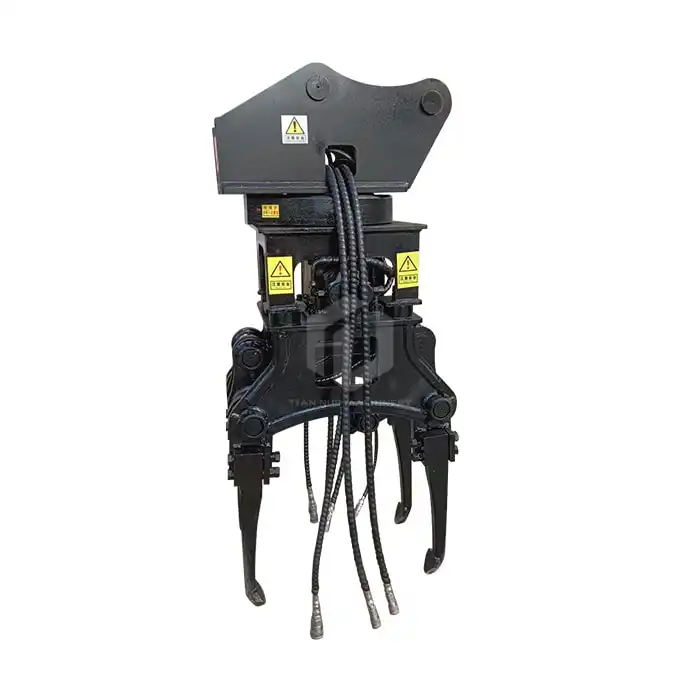 VIEW MOREHigh-vibration hydraulic ballast tamping machine
VIEW MOREHigh-vibration hydraulic ballast tamping machine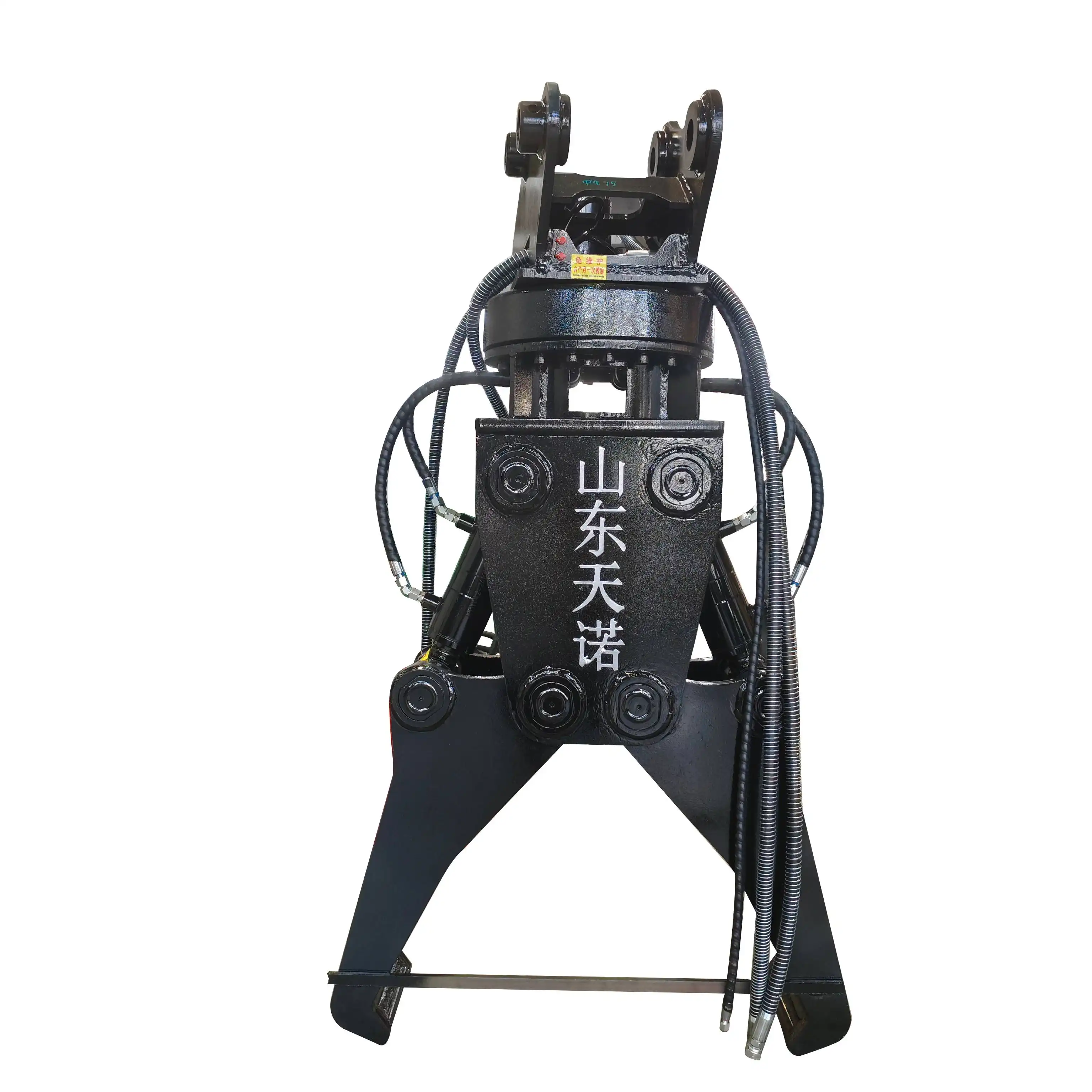 VIEW MOREExcavator rail clamp
VIEW MOREExcavator rail clamp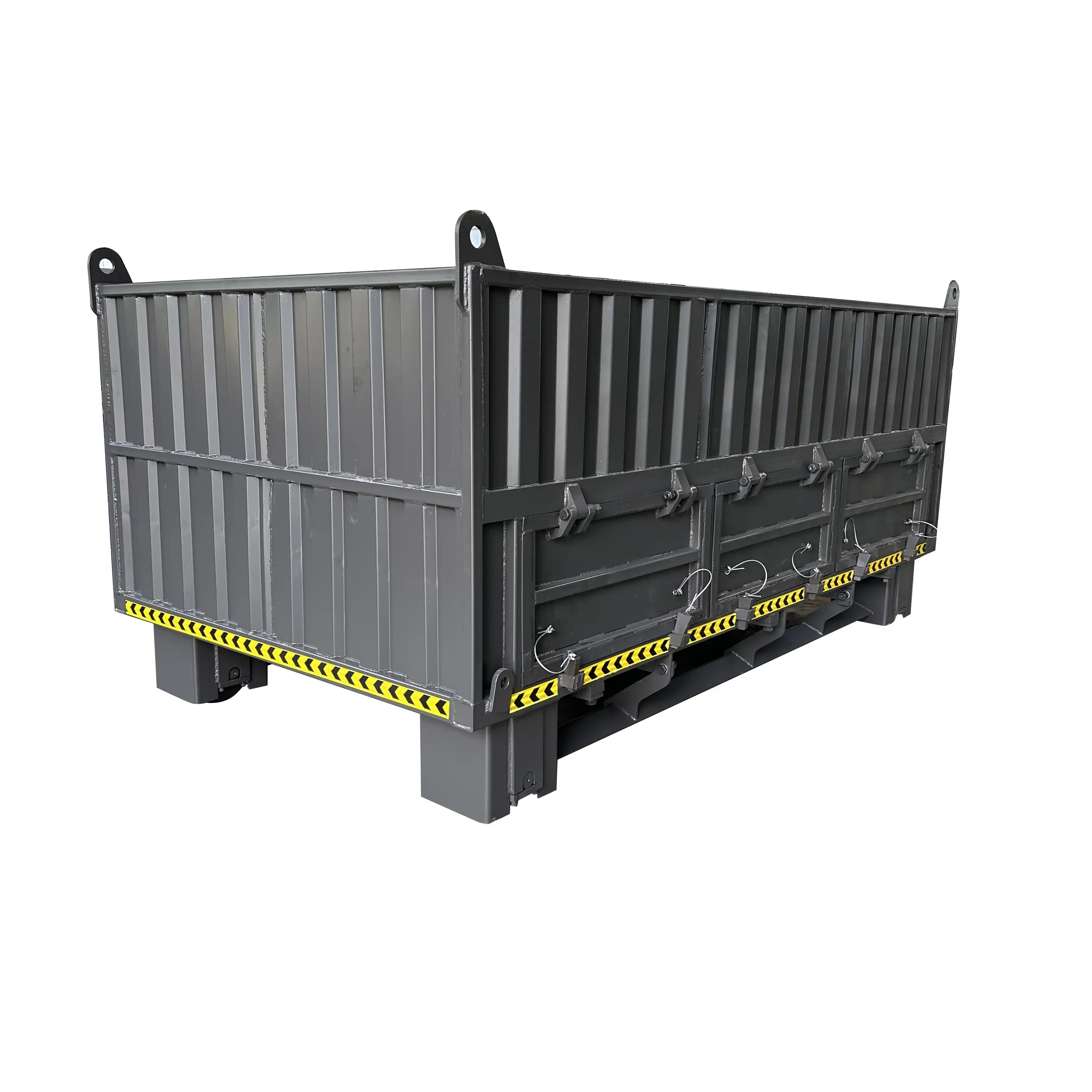 VIEW MORERailroad Ballast Car
VIEW MORERailroad Ballast Car VIEW MORELoader Tire Anti-Skid Track
VIEW MORELoader Tire Anti-Skid Track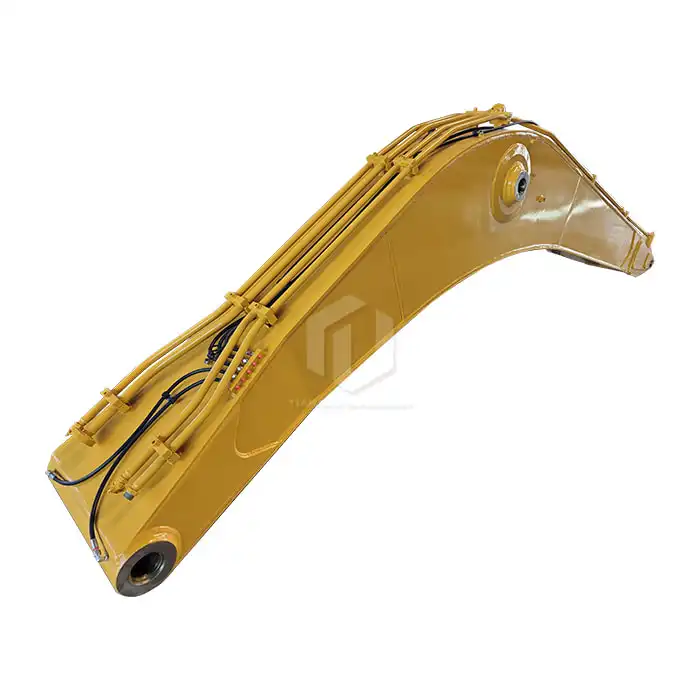 VIEW MOREStandard Size Excavator Boom And Arm
VIEW MOREStandard Size Excavator Boom And Arm VIEW MORESeaside Excavator Heightening Column
VIEW MORESeaside Excavator Heightening Column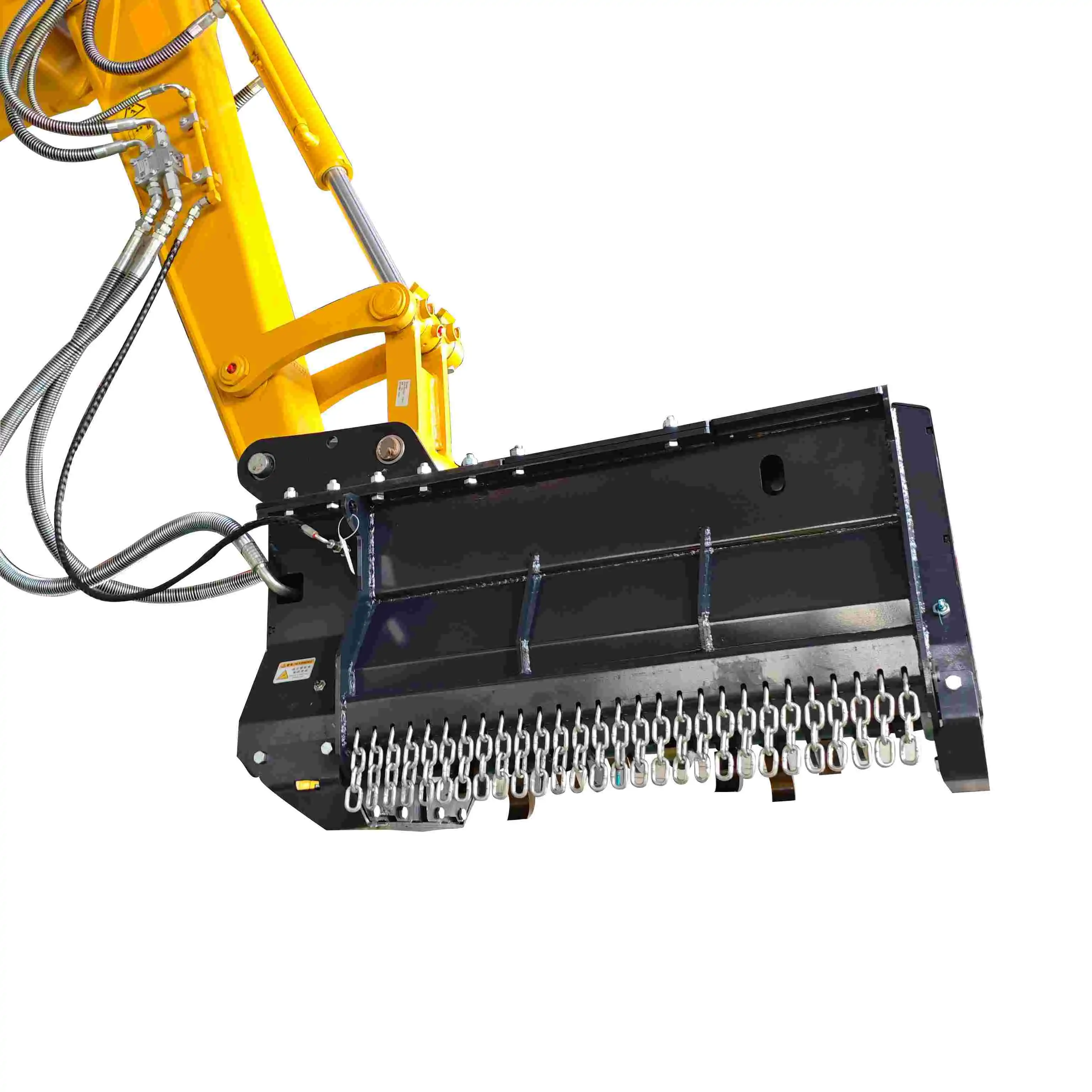 VIEW MOREExcavator Brush Cutter
VIEW MOREExcavator Brush Cutter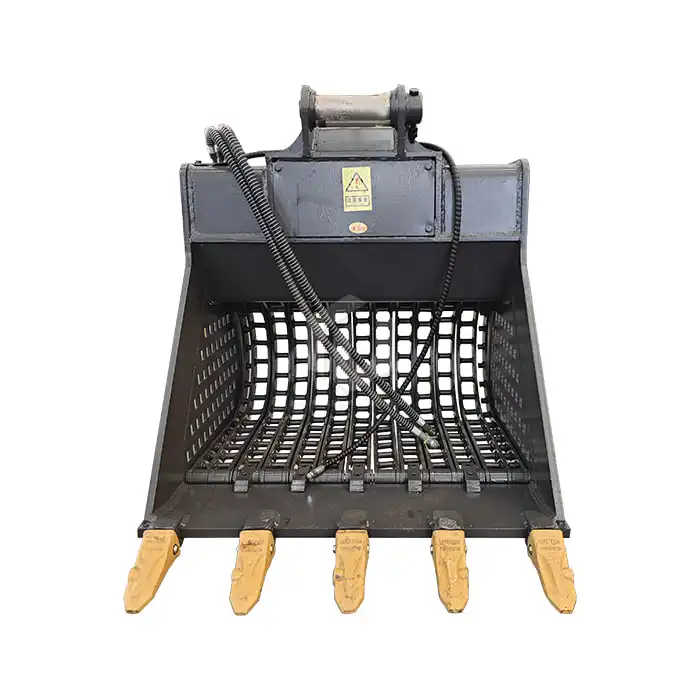 VIEW MOREExcavator Screening Bucket
VIEW MOREExcavator Screening Bucket

